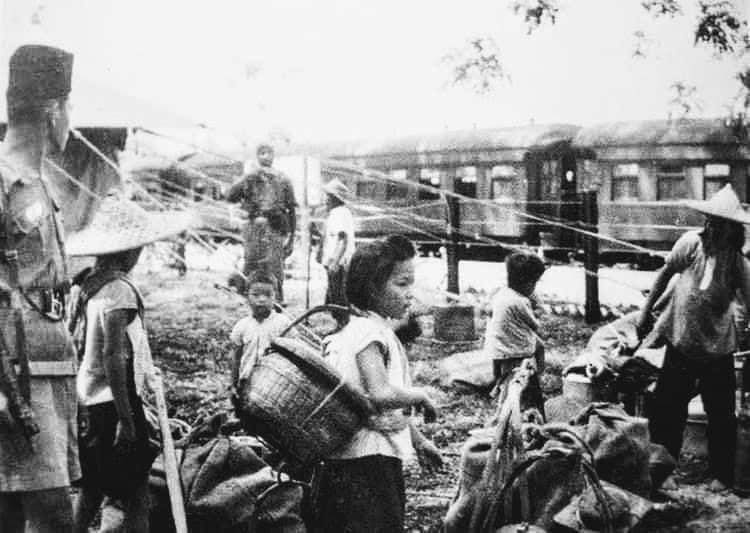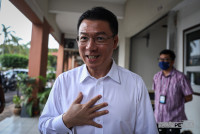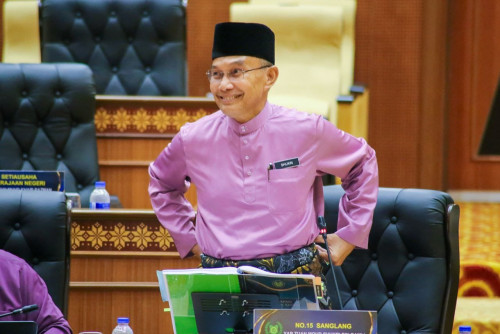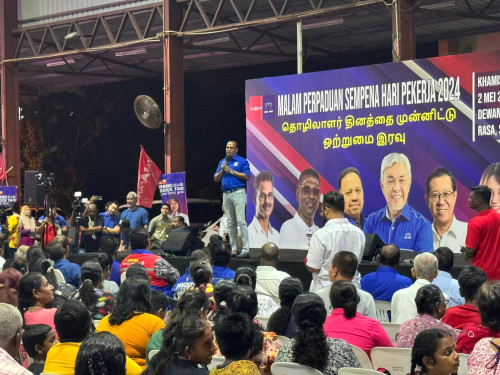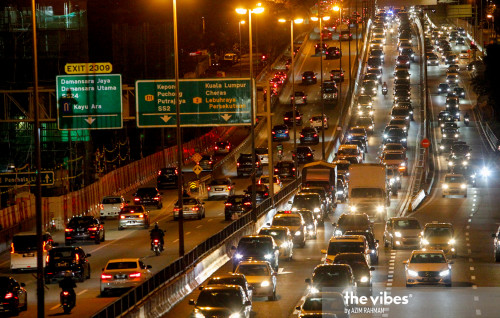THE PROPOSAL by Local Government Development Minister Nga Kor Ming to nominate some Chinese new villages in Selangor as a Unesco World Heritage site has been met with backlash from Umno and once again threatens to be yet another racial sideshow in Malaysian politics.
For those who know Malaysian history, such a proposal is an insult to Malaysians who fought against the British colonial power during the Emergency. Among the many injustices inflicted upon marginalized communities, the Chinese Malaysians’ plight during the Emergency era stands as a harrowing testament to the abuse of power. The so-called “Chinese new villages,” initially touted as a measure to curb communist insurgency, were nothing short of concentration camps, designed and enforced by the British colonial power.
To suggest that these sites should now be recognized as Unesco heritage sites is not only a historical oversight but a profound insult to the collective memory and resilience of the Chinese Malaysian community.
The term “Chinese new villages” may sound innocuous, even quaint, to the uninformed ear. However, scratch beneath the surface, and a darker narrative unfolds. These villages were not established out of benevolence by the British colonial power but born from a nefarious agenda of containment and control.
During the Malayan Emergency (1948-1960), the British colonial administration implemented draconian measures in its purported fight against the anti-colonial movement. One of the most egregious tactics was the forced relocation of Chinese Malaysians into tightly monitored settlements under the guise of strategic hamlets. These settlements resembled prison camps, where residents were subjected to stringent surveillance, arbitrary arrests, and inhumane living conditions. The Americans later learned this from the British and applied the same strategy during the Vietnam war.
The inhabitants of these villages were uprooted from their ancestral lands, stripped of their autonomy, and treated as mere pawns in a geopolitical chess game. Families were torn apart, livelihoods destroyed, and cultural heritage disregarded in the name of colonial supremacy.
Facing challenges since the Emergency
All in all, there are more than five hundred “Chinese New Villages” in the country. After the Malayan Emergency, which lasted from 1948 to 1960, Chinese New Villages in Malaysia faced various challenges, including issues related to land titles, infrastructure development, socioeconomic integration, and political representation.
Many residents of Chinese New Villages did not have proper land titles or documentation for the land they occupied. This lack of formal land ownership often led to disputes and difficulties in accessing credit or government assistance for agricultural development.
They initially lacked basic infrastructure such as proper roads, sanitation facilities, and access to clean water. Even after the end of the Emergency, the government’s focus on infrastructure development in these areas was limited, resulting in inadequate living conditions for the residents.
Chinese New Villages were often marginalised communities with limited access to education, healthcare, and economic opportunities. Integration into mainstream society was challenging due to social stigma and economic disparities. Residents of Chinese New Villages often faced challenges in political representation and participation. Gerrymandering and electoral policies sometimes marginalized these communities, reducing their political voice and representation in decision-making processes.
The transition from a wartime economy to peacetime posed challenges for Chinese New Villages, as they needed to adapt to new economic realities. Many residents relied on agriculture for their livelihoods, but changes in land use policies and agricultural practices affected their income and way of life.
Addressing these challenges required concerted efforts from both the government and the communities themselves. Over time, some progress has been made in improving the living conditions and socioeconomic status of Chinese New Village residents, but lingering issues continue to impact these communities to varying degrees.
To suggest that these sites merit recognition as Unesco heritage sites is to whitewash a dark chapter in history and sanitize the suffering of those who endured it. It is akin to celebrating the oppressor while erasing the voices of the oppressed.
Reclaim and retell our own history
Unesco heritage sites are intended to commemorate cultural and historical significance, to honour the legacies of civilizations and peoples who have shaped our world. By proposing the inclusion of Chinese new villages in this esteemed list, we not only trivialize the trauma of those who suffered within their confines but also perpetuate a narrative of colonial benevolence that rings hollow in the face of reality.
Instead of glorifying sites of oppression, we should strive to acknowledge and amplify the voices of those who were silenced, to preserve their stories and honour their resilience. The legacy of the Chinese Malaysian community is not confined to the barbed wire fences of new villages but woven into the fabric of Malaysia’s rich tapestry of diversity and resilience.
Rather than seeking validation from external institutions, let us endeavour to reclaim and retell our own history, acknowledging the scars of the past while forging a path towards healing and reconciliation. Only then can we truly honour the legacy of those who endured the darkness of oppression and emerged into the light of a new dawn.
Certainly, Malaysia is rich in Chinese heritage sites that could be worthy of Unesco recognition. Apart from George Town, Penang, and Melaka’s historic city, we have Cheng Hoon Teng Temple, Melaka; Kek Lok Si Temple, Penang; Perak Tong Cave Temple, Perak; Cheong Fatt Tze Mansion, Penang; Khoo Kongsi, Penang.
These sites not only represent the tangible aspects of Chinese heritage in Malaysia but also embody intangible cultural practices, beliefs, and traditions that have been passed down through generations. In addition to the well-known heritage sites mentioned earlier, Malaysia is home to several old villages and towns with significant Chinese cultural heritage such as Kampung Cina (Chinatown), Kuala Terengganu, Pulau Ketam (Crab Island), Selangor, Bukit Cina (Chinese Hill), Malacca, Pulau Pangkor (Pangkor Island), Perak.
These old villages and towns offer valuable insights into the history, culture, and way of life of Malaysia’s Chinese communities, making them worthy candidates for Unesco recognition as sites of intangible cultural heritage.
Bujang Valley, the mother of Malaysian historical sites
Having said all the above in response to the misguided proposal to make our Chinese new villages into Unesco heritage sites, let us not forget that one of the oldest historical sites in Malaysia is the The Bujang Valley Archaeological Museum and Archaeological Park in Kedah. This site is believed to have been a significant Hindu-Buddhist kingdom dating back to around the 2nd to 14th centuries CE. It features ruins of ancient temples, Buddhist stupas, and other archaeological remains, indicating the presence of a sophisticated civilization in the region nearly two thousand years ago.
Has the Malaysian government done enough to preserve, excavate and celebrate this stunning heritage before we even talk about seeking Unesco recognition? – The Vibes, February 13, 2024
Kua Kia Soong is a former Petaling Jaya MP and director of human rights organisation Suaram



